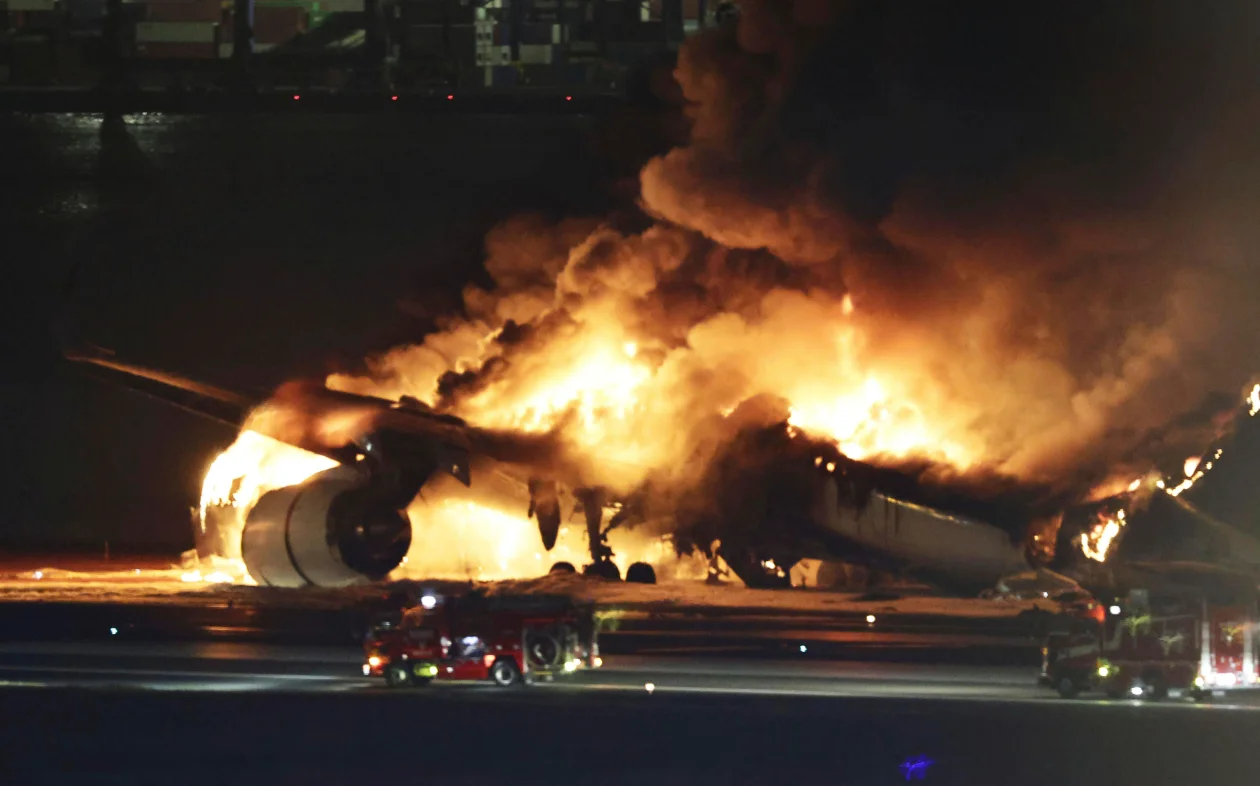Japan has been making headlines lately for unfortunate events.
In November 2023, the Japanese yen reached a historic low against the Singapore dollar, leading many Singapore residents to visit Japan, known for manga and kimonos, to maximise their spending during the holiday season.
On Monday (1 January 2024), Japan was struck by a series of powerful earthquakes.
These earthquakes resulted in at least 57 casualties, causing significant damage to thousands of buildings, vehicles, and boats.
The following day, a tragic incident occurred at Tokyo Haneda Airport, where a Japan Airlines plane erupted in flames after colliding with an earthquake relief aircraft.
The Airbus A350 arrived in Tokyo from Sapporo on Tuesday (2 January 2024). It collided with a Japan Coast Guard plane on its way to assist areas affected by the earthquake that struck the previous day.
Here’s everything you need to know about the tragic incident.
Five Out of Six Coast Guard Crew Members Die
According to Japan’s Transport Minister, Tetsuo Saito, five out of six Coast Guard crew members lost their lives on the other aircraft, identified as a De Havilland Canada DHC-8. Japanese media outlet NHK reported that the plane’s captain was in critical condition.
A spokesperson from the Japan Coast Guard told CNN that their aircraft had been en route from Haneda Airport to an airbase in Niigata Prefecture to assist with relief efforts in the aftermath of a devastating 7.5-magnitude earthquake.
17 Injured in Japan Airlines Flight, No Fatalities Reported
While there were fatalities on the aircraft operated by the Japan Coast Guard, all 379 individuals on board JAL516, which included eight infants under the age of two, were successfully evacuated from the passenger plane.
NHK reported that at least 17 passengers from the Japan Airlines plane suffered injuries.
Nonetheless, all 367 passengers and 12 crew members managed to escape the inferno that engulfed JL516.
During a press conference on Tuesday evening, Japan Airlines’ Senior Vice President, Noriyuki Aoki, stated that four passengers had been transported to hospitals.
The airline had not received any additional reports of injuries.
More Than 100 Fire Trucks Were Dispatched
Regarding landing, Japan Airlines said that their flight crew had received clearance from air traffic control to proceed with the landing before the collision occurred.
Audio recordings from LiveATC.net seem to corroborate this, with the crew audibly acknowledging and repeating the clearance order for runway 34, stating, “cleared to land 34 right”.
The airline’s statement further elaborated that, based on interviews with the operating crew, they had acknowledged and confirmed the landing permission from air traffic control, subsequently proceeding with the standard approach and landing procedures.
However, after landing, the Japan Airlines Airbus A350 collided with a Japan Coast Guard aircraft, resulting in a fire.

The aircraft came to a halt, and passengers and crew members utilised emergency slides to swiftly evacuate the plane as firefighters tried to put out the flames.

NHK reported that over 100 fire trucks were dispatched in response to this tragic accident.
International Flights Disrupted by Haneda Airport Runway Closure
Most departures from Haneda Airport have also been cancelled, and the timeline for the resumption of flight services remains uncertain, as reported by NHK.
Singapore Airlines, one of the numerous international carriers operating at Haneda Airport, has officially confirmed that the ongoing runway closure is affecting several of its flights.
As a result of the closure, SQ634 (Singapore to Haneda) had to be diverted to Narita Airport, Tokyo’s alternate international hub, where it successfully landed at approximately 9.10pm local time.
An SIA spokesperson said the situation is constantly evolving, and other Singapore Airlines flights connecting Singapore and Tokyo’s Haneda Airport may also encounter disruptions.
According to Reuters, live images depict a smouldering aircraft, with firefighting efforts seemingly subsiding.
A video shared on X (previously Twitter) vividly showcases the extensive damage the Japan Airlines plane suffered from the collision, including a charred section of the fuselage breaking away as firefighters continued to extinguish the flames.
The Aviation Safety Network reports that there has never been an incident involving an A350 resulting in a hull loss. Airbus defines a hull loss on its website as “an event in which an aircraft is irreparably destroyed or damaged beyond economic recovery”.
